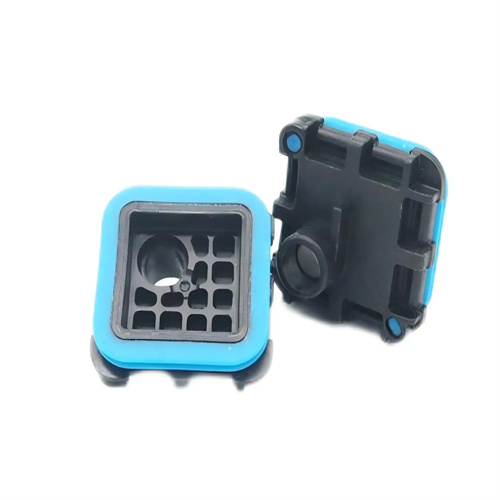Considerations for cavity arrangement
Cavity arrangement is a crucial aspect of multi-cavity injection mold design, directly impacting melt filling uniformity, mold force balance, and part quality consistency. Proper cavity arrangement ensures simultaneous filling of all cavities and even pressure distribution, minimizing dimensional deviation and performance fluctuations in the molded parts caused by filling variations. Conversely, an improper arrangement can result in underfilling or overfilling of some cavities, increasing scrap rates and even causing deformation due to uneven mold force. For example, in the production of a multi-cavity mobile phone battery case mold, improper cavity arrangement can result in weight variations exceeding 5% and thickness variations exceeding 0.1mm between cavities, seriously impacting product assembly. Therefore, cavity arrangement must comprehensively consider factors such as mold structure, melt flow characteristics, and production efficiency, adhering to scientific design principles.

Symmetry and balance in cavity arrangement are paramount for ensuring uniform filling. Cavities should be symmetrically distributed around the main runner, ensuring that the melt flow path length, cross-sectional shape, and resistance are as consistent as possible within each cavity, ensuring that the melt reaches and fills each cavity simultaneously. Common symmetrical arrangements include circular, rectangular, and linear. For an even number of cavities, a two-by-two symmetric layout can be adopted; for an odd number of cavities, the positions must be adjusted to achieve overall force balance. For example, a six-cavity mold can be arranged in a regular hexagonal pattern, with each cavity equidistant from the main runner and flow path variation within 5%. An eight-cavity mold can be arranged in two symmetrical rows, with four cavities per row, to ensure consistent filling conditions for both cavities. Balance also requires that the gates of each cavity be identical in size and position to avoid varying filling speeds due to gate variations.

Proper design of cavity spacing and mold dimensions is key to ensuring mold strength and ease of operation. The distance between cavities must meet two requirements: first, sufficient space must be provided for cooling water lines and fixing screws. Typically, the spacing is no less than 15-20mm, and for large plastic parts, this spacing should be increased to 30-50mm. Second, the wall thickness around the mold cavity must be uniform to prevent localized thinness that could lead to insufficient strength. Equally important is the distance between the cavity and the mold edge, typically no less than 20-30mm, to ensure sufficient rigidity for the mold frame to withstand clamping forces and injection pressure. For example, when producing a 50mm diameter part, a cavity spacing of 25mm and a cavity-to-edge distance of 30mm will keep mold deformation under clamping forces to within 0.01mm. Furthermore, the cavity arrangement must consider the overall mold dimensions, avoiding excessively large cavities that may result in insufficient equipment capacity, or excessively small cavities that may compromise operating space.

Controlling melt flow paths and pressure loss is a core technical requirement for cavity arrangement. The melt flow path lengths of each cavity should be as close as possible, with a difference of no more than 10%. Otherwise, flow resistance will vary and filling time will vary. For cavities with longer flow paths, the gate size can be appropriately increased or auxiliary runners can be added to balance the filling speed. For example, in a multi-cavity mold, if the flow path of one cavity is 15% longer than that of the others, the gate diameter can be increased by 0.1-0.2mm to reduce the filling time difference to less than 0.1 second. Furthermore, the runner cross-section should be circular or trapezoidal to reduce flow resistance, and arc transitions should be used at runner transitions to avoid pressure loss and melt degradation caused by right or sharp angles. CAE mold flow analysis software can be used to simulate the filling process of each cavity and optimize the arrangement to keep the filling time difference within 0.2 seconds.

The cavity arrangement must be designed in coordination with the cooling system and demolding mechanism. Cooling water channels should be evenly arranged around each cavity, maintaining a consistent distance from the cavity (usually 15-25mm) to ensure the same cooling rate for each cavity and reduce differences in shrinkage of the plastic parts. Cavity arrangement should avoid intersecting or excessively long cooling water channels, which can affect cooling efficiency. For example, circular cavities can use annular cooling water channels, while rectangular cavities can use parallel water channels to keep the temperature difference between cavities within ±2°C. In terms of the demolding mechanism, the cavity position must correspond to demolding elements such as push rods and push plates to ensure uniform demolding force for each cavity and avoid interference between demolding elements due to overly dense arrangement. For molds with automatic demolding, the cavity arrangement must also consider the ejection direction and drop position of the plastic part to facilitate automated part removal. In addition, the cavity arrangement should leave sufficient space for the installation of exhaust slots to ensure that the gas in each cavity can be discharged smoothly.

Optimizing the cost-effectiveness and production efficiency of cavity arrangement is a crucial consideration in actual production. While ensuring quality, the number of cavities should be increased as much as possible to improve production efficiency, but this must be balanced with the injection molding machine’s shot volume and clamping force. For example, when the maximum shot volume of an injection molding machine is 500g, the total weight of a multi-cavity part should not exceed 400g (80% full shot) to avoid underfilling. Cavity arrangement also needs to consider the mold’s processing difficulty and cost. Overly complex arrangements increase processing time and costs, while standardized arrangement modules can be used to reduce costs. For products with large batch sizes and high precision requirements, ensuring a reasonable arrangement is a priority. For small batch sizes and simple parts, the arrangement can be simplified to balance cost and efficiency. Through comprehensive optimization, a reasonable cavity arrangement can increase the production efficiency of multi-cavity molds by over 30% while keeping the scrap rate below 3%.
